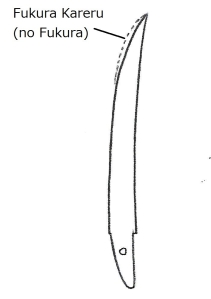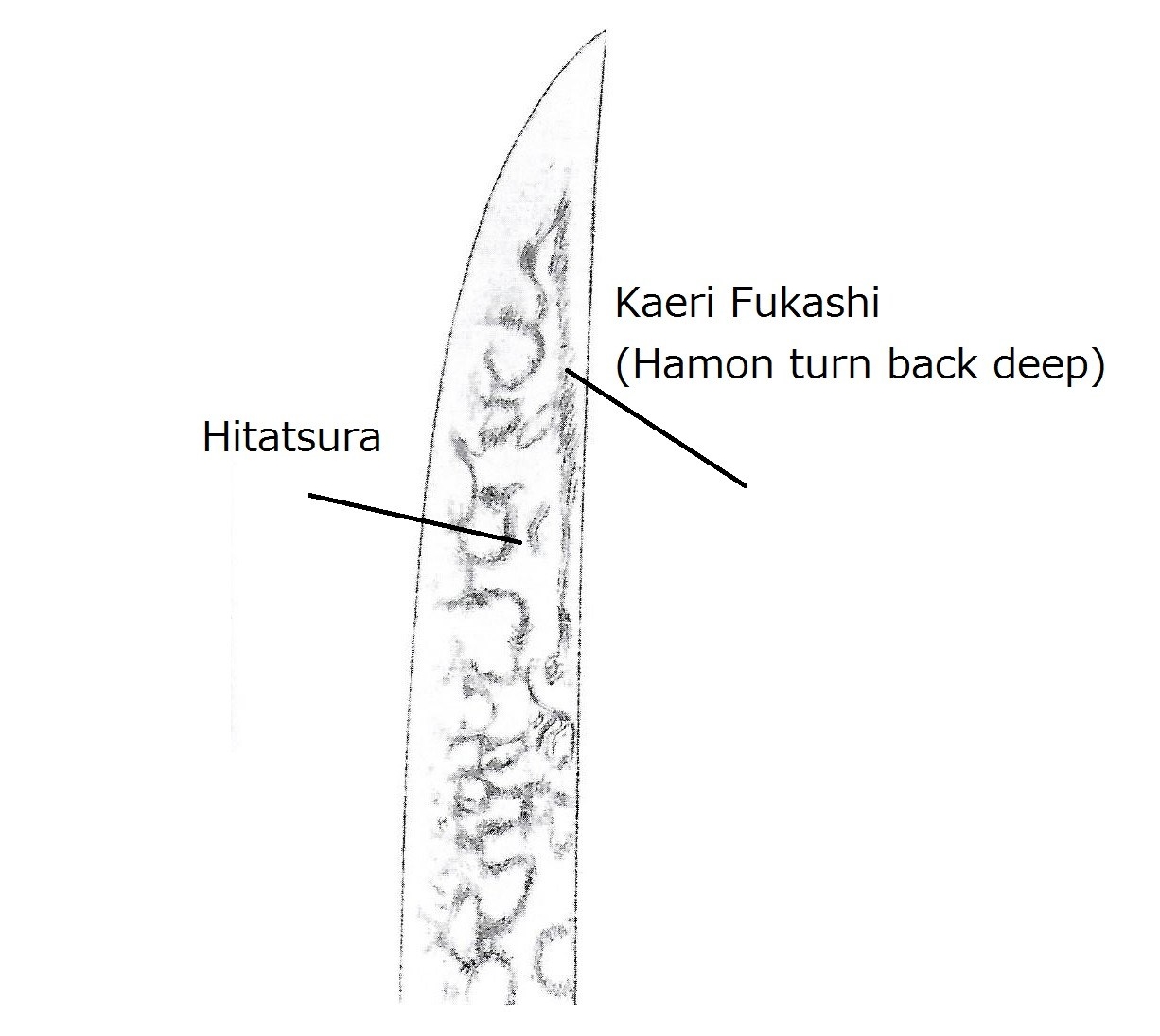The circle indicates the time we discuss in this section
During the Nanboku-cho period, a type of Tanto called Hirazukuri Ko-wakizashi Sun-nobi Tanto was made. Hirazukuri means a flat sword without the Yokote line and Shinogi. Ko-wakizashi means a shorter sword. Sun-nobi Tanto means longer than standard Tanto. This is also called Enbun Jyoji Ko-wakizashi Tanto. It is called this way because majority of this type of Tanto were forged around Enbun and Jyoji imperial era. In Japan, a new imperial period starts when a new emperor ascends to the throne. The Enbun era was from 1356 to 1361, and the Jyoji period was from 1362 to 1368.

Sugata (姿: shape) ——- The length of a standard size Tanto is approx. one Shaku. Shaku is an old Japanese measurement unit for length and, one Shaku is very close to 1 foot.
8.5 Sun (the Sun is another old Japanese measurement unit for length) is approximately 10 inches. Ten inches is the standard size Tanto called Josun Tanto. Anything longer than Josun Tanto is called Sun-nobi Tanto. Anything shorter than Josun is called Sun-zumari Tanto.
Most of the Nanboku-cho tantos are longer than Josun Tanto, approximately 1 foot 2 inches long. Therefore they are called Hirazukuri Ko-wakizashi Sun-nobi Tanto.
Saki-zori (curved outward at the top. See the illustration above). Wide width and thin body. Fukura Kareru (no Fukura means less arc). Shin-no-mune. See the drawing below.


Hi, (樋: Grooves) and Horimono (彫り物: Engraving) —- A groove or grooves on the Mune side. Bonji (Sanscrit, described in Chapter 16 Late Kamakura Period (Early Soshu-Den Tanto 鎌倉末短刀, Koshi-bi (Short groove), Tumetuki Ken, Tokko-tsuki Ken (see below) appear. Ken (dagger) is curved widely and deeply in the upper part and shallower and narrower in the lower part. This is called Soshu-bori (Soshu stule carving).

Hamon (刃: Tempered line) —– The narrowly tempered at the lower part gradually becomes wider toward the top. Then a similar wide Hamon goes into the Boshi area. Hamon in the Kissaki area is Kaeri-fukashi (turn back deep). See the illustration below. Coarse Nie. O-midare (large irregular Hamon pattern).

From Sano Museum Catalogue
Ji-hada (地肌: Area between shinogi-ji and tempered line)——— Loose wood grain pattern called Itame. Yubashiri (refer Chapter 16| Late Kamakura period: Early Soshu-Den Tanto (鎌倉末短刀)), Tobiyaki (Irregular patchy tempered spot) appear. Crowded (or busy) Tobiyaki is called Hitatsura (drawing above).
Nakago (茎: Tang) —- Short Tanago-bara. Tanago-bara means the shape of the belly of a Japanese fish Tanago (bitterling).

Tanto Sword-smiths during Nanboku-Cho Period
Soshu Den ———————————————————-Hiromitu( 広光) Akihiro (秋広) Yamashiro Den ————————————————–Hasebe Kunishige (長谷部国重) Bizen Den ——————————————————— Kanemitu (兼光) Chogi (長義 )
 Soshu Hiromitsu “Nippon-To Art Sword of Japan “ The Walter A. Compton Collection
Soshu Hiromitsu “Nippon-To Art Sword of Japan “ The Walter A. Compton Collection
